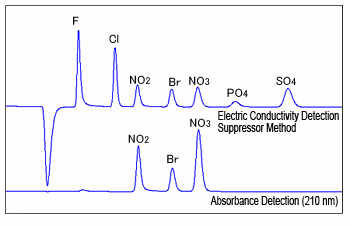Direct and Continuous Nitrate Monitor
Methods of measuring nitrate are either direct using chemical indicators, or indirect by qualitative observations. During which the methods of detecting nitrate occur discontinuously. In an effort to demonstrate the fundamental design of a continuous nitrate monitor, the joining of direct water quality monitor and the resolution of continuous detection are met.
Do-It-Yourself Nitrate Detector
To demonstrate the aspects of environmental monitoring, spectrophotometry principles will be used to develop a do-it-yourself (DIY) spectrometer. The conceptual theory of constructing a device capable of measuring nitrate in drinking water involves a light emitting source, a refracting lens for the light source, and a photosensor to measure differences in the light source. Preference is given to spectrometry over potentiometry because of the use of highly specialized and manufactured material required to effectively conduct an ISE method. (Note: other journal articles contend this opinion and can be referenced here). Refer to Appendix A for the complete description of the materials and methods used.
The DIY spectrometer is a tool made from common household materials, or materials common at retail stores. The device utilizes a 1” electrical conduit body to house a webcam. Light is emitted from a source (preferably in the UV range for future trials) through an imaging slit. The light then passes through a DVD-R lens that refracts the light into its respected spectra. The webcam measures this spectrum through the use of an open-source website, www.spectralworkbench.org. Distilled water is placed in a cuvette in front of the slit of the spectrometer and the spectrum saved for calibration (click here for calibration details). When well-water passes in front of the light source, it absorbs a portion of the source spectrum which is measured by the webcam in which a reference wavelength of the source spectra is evaluated to extract a measured value. This is the transmittance of a sample containing some of the chemical or substance.
Once on-site, the spectrometer is placed at a location between the well and household. To begin measuring nitrate, the monitor is placed at a clear section of pipe, or where well water is diverted to a flow-thru cell. Since a baseline calibration spectra was once saved, it can always be referenced in the future; nitrate can measured at any time the household wishes.
Conclusion
Difficulties, such as false negatives and positives arise when nitrate concentrations are at undetectable limits (~0.2 mg/L, according to Hach colorimetric methods). Even so, the DIY spectrometer is an inventive idea to overcome the disparity between nitrate monitoring for wastewater treatment plant discharges and homeowners looking to monitor their well for nitrate. The economics of rural settings limits compromise for this disparity. For this spectroscopy theory to be practical, implementing a webcam and a website used to measure nitrate must have easy-to-use features that encompass the abilities of the user (click here for Envitech, a British company that specializes in nitrate detection). Basic construction is feasible, but with ever advancing electronics, end-users may have more of an aptitude towards learning new concepts of environmental monitoring.
